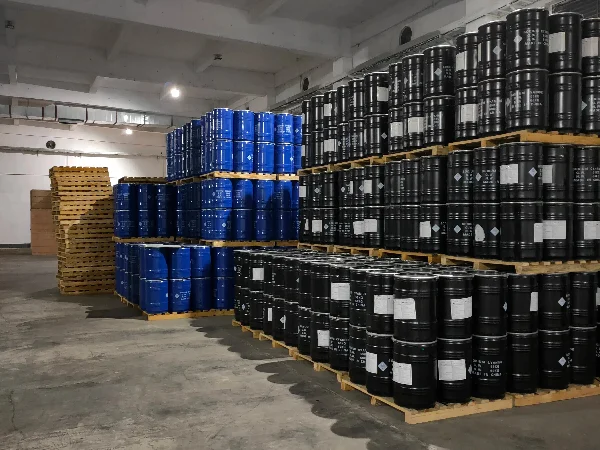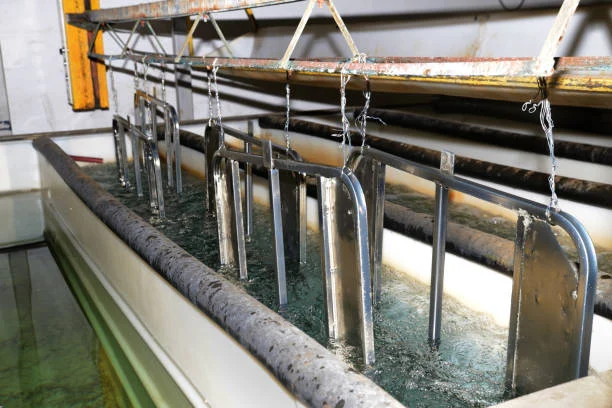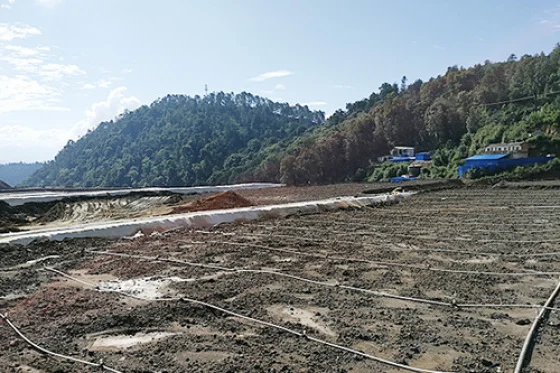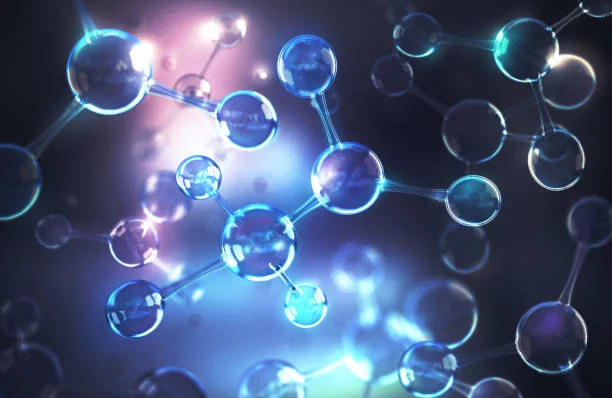
Introduction
Sodium Cyanide (NaCN), a white crystalline solid highly soluble in water, is both a strong base and a powerful nucleophile, making it a valuable reagent in Organic synthesis. Despite its extreme toxicity, which necessitates strict safety precautions during handling, Sodium cyanide plays a crucial role in the synthesis of diverse organic compounds, including pharmaceuticals, agrochemicals, and polymers.
Role of Sodium Cyanide in Organic Synthesis
Cyanide Ion as a Nucleophile
The cyanide ion within Sodium Cyanide is a highly reactive nucleophile. Thanks to the negative charge on the carbon atom and the high electronegativity of the nitrogen atom, it can attack electrophilic centers in organic molecules, such as carbonyl groups, alkyl halides, and epoxides.
Formation of C - C Bonds
One of the most significant functions of sodium cyanide in organic synthesis is the creation of new carbon - carbon bonds, achieved through nucleophilic substitution and addition reactions. For instance, when an alkyl halide reacts with sodium cyanide, the cyanide ion replaces the halide ion, leading to the formation of a nitrile. This reaction provides a simple way to introduce an additional carbon atom into the molecule. Subsequently, the nitrile group can be transformed into other functional groups like carboxylic acids, amines, or aldehydes through various chemical processes.
Synthesis of Amino Acids - The Strecker Reaction
Sodium cyanide is a key component in the Strecker reaction, which is used for the synthesis of α - amino acids. In this reaction, an aldehyde or a ketone combines with ammonium chloride and sodium cyanide to form an α - amino nitrile. This α - amino nitrile can then be hydrolyzed to produce the corresponding α - amino acid.
The reaction unfolds in several steps: First, the carbonyl group of the aldehyde or ketone undergoes protonation, increasing its electrophilicity. Then, an ammonia molecule attacks the protonated carbonyl group, followed by deprotonation to form a hemiaminal. Next, the hydroxyl group of the hemiaminal is protonated, resulting in the elimination of water and the formation of an iminium ion. The cyanide ion then attacks the iminium ion to yield the α - amino nitrile. Finally, hydrolysis of the α - amino nitrile in the presence of an acid or a base gives the α - amino acid.
Synthesis of Nitriles from Aryl Halides - The Rosenmund - von Braun Reaction
In the Rosenmund - von Braun reaction, sodium cyanide is utilized to convert aryl halides, which are halogen - substituted aromatic compounds, into aryl nitriles. Catalyzed by copper(I) cyanide and usually requiring high temperatures, this reaction involves the formation of a copper - aryl intermediate. The cyanide ion from sodium cyanide then reacts with this intermediate to form the aryl nitrile. This process is important for introducing a nitrile functional group onto an aromatic ring, which can be further modified for the synthesis of various aromatic compounds, such as pharmaceuticals and dyes.
Synthesis of Carbonyl Compounds
Sodium cyanide also participates in the synthesis of carbonyl compounds. For example, when it reacts with an epoxide, the cyanide ion attacks the less - substituted carbon atom of the epoxide ring, causing the ring to open. Subsequent hydrolysis of the resulting cyanohydrin can lead to the formation of a carbonyl compound.
Mechanisms of Reactions Involving Sodium Cyanide
Nucleophilic Substitution Reactions
SN2 Mechanism: When sodium cyanide reacts with primary alkyl halides, the reaction typically follows an SN2 (bimolecular nucleophilic substitution) mechanism. The cyanide ion attacks the carbon atom attached to the halogen from the backside, opposite to the position of the leaving halide ion. This is a concerted reaction where the breaking of the carbon - halogen bond and the formation of the carbon - cyanide bond happen simultaneously. The reaction rate depends on the concentrations of both the alkyl halide and the cyanide ion, and the stereochemistry of the product is inverted compared to that of the starting material.
SN1 Mechanism: With tertiary alkyl halides, the reaction may proceed via an SN1 (unimolecular nucleophilic substitution) mechanism. First, the alkyl halide dissociates to form a carbocation intermediate. Then, the cyanide ion attacks this carbocation to form the product. The SN1 mechanism is characterized by the formation of a planar carbocation intermediate, and the product may exhibit a mixture of stereochemistries, a phenomenon known as racemization, due to the nucleophile attacking from both sides of the planar carbocation.
Nucleophilic Addition Reactions
Addition to Carbonyl Groups: When sodium cyanide reacts with aldehydes or ketones, the cyanide ion targets the electrophilic carbonyl carbon atom. The carbonyl group has a polarized carbon - oxygen bond, with the carbon atom being the electrophilic site. The attack of the cyanide ion creates a new carbon - cyanide bond, and the oxygen atom of the carbonyl group gains a negative charge. In the next step, a proton source, such as water or an acid, protonates the oxygen atom to form a cyanohydrin. This reaction is reversible, and the equilibrium can be adjusted towards the product by controlling the reaction conditions.
Addition to Imines: In the Strecker reaction, the addition of the cyanide ion to the iminium ion, which is formed from the reaction of an aldehyde or ketone with ammonia, follows a similar nucleophilic addition mechanism. The iminium ion has a positive charge on the nitrogen atom, making the adjacent carbon atom electrophilic. The cyanide ion attacks this carbon atom, forming a new carbon - cyanide bond and resulting in the formation of an α - amino nitrile.
Safety Considerations
It is crucial to emphasize that sodium cyanide is extremely toxic. Inhalation, ingestion, or skin contact with it can be fatal. When working with sodium cyanide, strict safety protocols must be adhered to. This includes conducting experiments in a well - ventilated fume hood, wearing appropriate personal protective equipment like gloves, goggles, and a lab coat, and having proper emergency response plans in place in case of accidental exposure.
Conclusion
Sodium cyanide is a powerful and versatile reagent in organic synthesis. Its ability to act as a nucleophile and create new carbon - carbon bonds makes it an indispensable tool for chemists in synthesizing a wide array of organic compounds. Understanding the reaction mechanisms involving sodium cyanide is essential for devising efficient synthetic routes and predicting reaction outcomes. However, due to its high toxicity, its use must be carefully regulated and carried out with the utmost safety precautions to safeguard the well - being of chemists and the environment.
- Random Content
- Hot content
- Hot review content
- Company product introduction
- Sodium Amyl Xanthate (SAX) 90%, Mining chemical, mining flotation reagent
- Calcium Peroxide 60% Assay Yellowish Tablet
- Manganese sulfate
- 2-Hydroxyethyl acrylate (HEA)
- Isobutyl vinyl ether 98% high purity certified Professional producer
- Ethylene carbonate
- 1Discounted Sodium Cyanide (CAS: 143-33-9) for Mining - High Quality & Competitive Pricing
- 2Sodium Cyanide 98% CAS 143-33-9 gold dressing agent Essential for Mining and Chemical Industries
- 3Sodium Cyanide 98%+ CAS 143-33-9
- 4Anhydrous Oxalic acid 99.6% Industrial Grade
- 5Oxalic acid for mining 99.6%
- 6Soda Ash Dense / Light 99.2% Sodium Carbonate Washing Soda
- 7Reagent Grade/Industrial Grade Hydrochloric Acid min.31%
- 1Sodium Cyanide 98% CAS 143-33-9 gold dressing agent Essential for Mining and Chemical Industries
- 2High Quality 99% Purity of Cyanuric chloride ISO 9001:2005 REACH Verified Producer
- 3 High-Quality Sodium Cyanide for Leaching
- 4Powdery emulsion explosive
- 5Industry Grade Electron grade 98% Sulfuric Acid H2SO4 Sulphuric Acid Battery Acid Industrial Sulfuric Acid
- 6Colloidal emulsion explosive
- 7sodium hydrosulfide 70% flakes used Mining Industry












Online message consultation
Add comment: